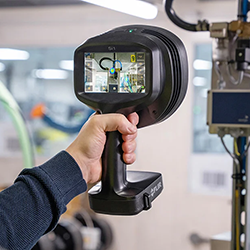IIoT Deployments to Double: Manufacturers Reinvent Themselves with New Technologies
Amazon robots bring a brave new world to the warehouse
Has IIoT Become the Norm Across All Industrial Sectors? Industry Experts Say
Small Town America's Newest Product: Advanced Manufacturing
Foxconn's Wisconsin plan raises skepticism as well as hope
Voodoo Automates 3D Printing to Take on Injection Molding
Toward additive manufacturing
How GE Appliances Built an Innovation Lab to Rapidly Prototype Products
Smart Factories Will Deliver $500B In Value By 2022
Japanese companies form alliance to accelerate smart factories
Cermaq near to completing "smart" factory for salmon
Google Glass 2.0 Is a Startling Second Act
3D Printing Will Make the Construction Industry More Sustainable
Accenture Launches Industrial IoT Innovation Center
If Foxconn builds a manufacturing plant in Wisconsin, it won't be what many expect
Records 706 to 720 of 863
First | Previous | Next | Last
Engineering - Featured Product

